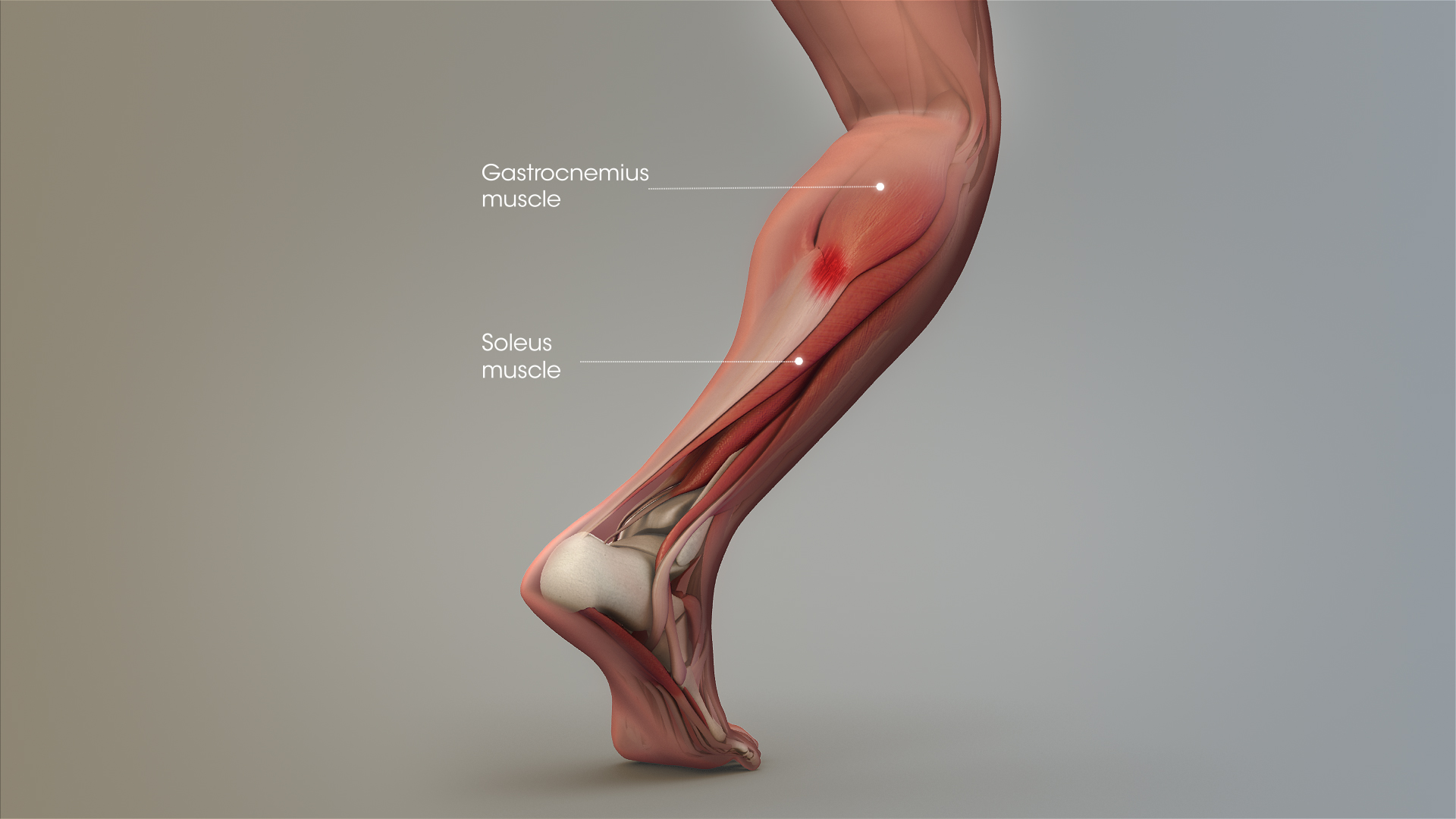After our article on Runner’s knee, let’s go down a bit and talk about the calfs.
Often when we experience a shooting pain in our calf muscle, there might not be one specific reason behind it. Your calf can hurt due to multiple reasons, some of which are so complex and convoluted that they are highly prone to misdiagnosis.
If you know how your leg looks like from inside, you’ll know why these conditions are so difficult to diagnose and differentiate.

As we know, our muscles are connected to the bones via specialized structures called ‘tendons’.
Our calf muscles or triceps consist of three separate muscles- gastrocnemius, soleus, and plantaris which unite to form the Achilles tendon. The plantaris muscle, although the thinnest of all, and infact even vestigial in many, plays an important role in supporting the other two muscles.
The Achilles tendon is the largest tendon in the body which is very vulnerably situated. It functions as the structural gateway between the leg, ankle, and foot (heel) and is, therefore, critical for activities like walking, running, and jumping.
Now think of a sport which frequently involves jumping and pushing off...
Tennis. Exactly.
That’s why the muscle injury caused as a result of the above activities is named Tennis leg.
Tennis and soccer players over 40 are the most frequent sufferers of this condition.
The pain is like an instant stabbing or tearing sensation, almost similar to the feeling of getting kicked from behind. So, if you can’t recall what triggered the pain, then, most probably, you haven’t ruptured your calf muscle.
On the other hand,
Achilles tendonitis is an overuse injury characterised by redness and inflammation of the Achilles tendon. The inflammation could be the outcome of microtears in the tendon. As a treatment, your physician would advise you to refrain from doing too much too soon.
Simply put, the pain resulting from a muscle tear is more shooting than the one produced from a tendon rupture. That is why Tennis leg usually hurts more than Achilles tendonitis.
Achilles injuries are somewhat less common among non-athletes but frequently affect the elderly and sedentary. You are also more susceptible to ruptures if you have:
- An autoimmune disease,
- Begun an exercise regimen in middle age
- Obesity,
- Certain antibiotics,
- A habit of smoking, and
- Localized steroid injections.
You don’t want to be misdiagnosed for Achilles tendonitis, do you?
Evidently, the most important consideration when trying to identify the type of calf injury is the events leading up to the onset of pain and whether the pain happened suddenly or got worse over a period of time.
However, being so closely related, the diagnosis of the two limb injuries is certainly a challenge.
Yes, there are clinical ways to improve the diagnosis of Achilles tendon ruptures, however, there are some widely held assumptions and misconceptions associated with them which, quite convincingly, contribute to a misdiagnosis. Consider the following points:
- If you were able to walk in the examination room, you could have still ruptured your Achilles tendon because it has been seen in some old ruptures that even patients with complete tears could walk.
- If you can flex the plantaris muscle passively and against resistance, there are still chances of Achilles tendonitis. This is because there are other muscles that act as flexors at the ankle.
- Sometimes, in case of acute but old ruptures, the swelling surrounding the tendon can conceal the gap. Old ruptures even produce hematomas which can organize and contribute to re-constitution of the tendon. So, being unable to feel the gap during palpation is still not a confirmed test to discard the possibility of Achilles tendonitis.
- No pain also doesn’t ensure that your Achilles tendon is intact. A study has reported that roughly one-third of patients with complete Achilles tendon ruptures did not complain of pain.
Certainly, if you overlook these injuries, you’ll have to face some severe consequences including chronic pain and swelling, poor gait, and inability to return to sporting activities. Timely diagnosis and referral are, therefore, essential for a complete and successful recovery.
We’ll keep bringing you more updates on anatomical injuries and ways to turn your #SetbackToComeback.
The What, Why And When Of Patellofemoral Pain Syndrome (Runner’s Knee)
It’s every runner’s nightmare to suddenly feel a shooting pain in the knee when midway through a training for their next race, or even worse, during the race. Patellofemoral pain syndrome (PFPS) is a condition in which the pain is felt mainly in the front region of the knee, specifically on the underside of or somewhere around the edges of the kneecap. Read More..








